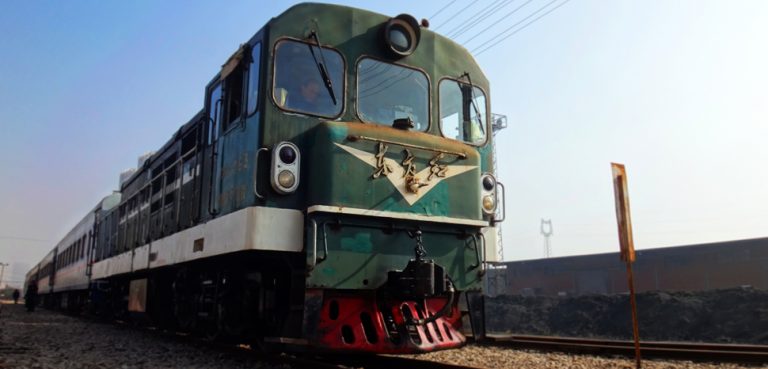China Belt And Road Initiative (Bri) Background
Ever since its largely unremarkable inception in a speech at Kazakhstan’s Nazarbayev University in 2013, President Xi’s landmark Belt and Road Initiative (BRI) has represented a moving target for analysts and policymakers. The branding has evolved – from a Maritime Silk Road of the 21st century, to One Belt One Road, before finally settling on the current form. So too has the project’s geographic scope, which branched out from its original Eurasian focus to eventually encompass Africa, Oceania, Latin America, and even the Arctic. And in a shift beyond the original economic thrust of promoting infrastructure development, Belt and Road has evolved into a banner under which numerous educational, environmental, and technological exchanges proliferate around the world. Just two of many examples include the ‘Digital Silk Road,’ which seeks to expand the footprint of China’s tech giants and afford them a larger role in shaping global standards, and the ‘Space Silk Road’ which facilitates satellite launches and technical cooperation among developing countries.
A brief overview of BRI from 2013-2024:
- Originally announced in 2013 by Xi Jinping, the project was formally launched in 2014 with a $40 billion government investment in the Silk Road Fund.
- Fast-forward to 2019 and the Belt and Road Initiative (BRI) has become an all-encompassing label for state-directed infrastructure projects in and around China. Chinese officials will often brand a local or regional project as Belt and Road in order to attract more central government attention and/or funding, even when these projects do not apply to any of the major trade corridors.
- The BRI seeks to remedy underinvestment in infrastructure in Asia and beyond by building ports, roads, rails, pipelines, airports, and cyber infrastructure. In 2018 total investment in BRI-participating economies reached a cumulative total of $480 bill.
- Belt and Road draws in a slate of Chinese state institutions that goes beyond the Silk Road Fund; for example, state-owned banks extending concessionary loans for BRI-related projects or the AIIB’s support of Belt and Road.
- BRI projects have met with success linking Asian and European markets, evident in the total 40,000 China-Europe freight trips on a route that prior to 2011 did not functionally exist. In 2021 alone, the China Railway Express (CR Express) – the callsign under which over 50 Chinese cities are connected to 24 European countries via 82 routes – operated over 15,183 trains carrying 1.46 million TEUs of cargo.
Some of the main BRI corridors:
- The New Eurasian Land Bridge. This is an overland route that would connect Lianyungang in China to Rotterdam in the Netherlands via Kazakhstan – a distance of nearly 12,000 kilometers.
- The China-Mongolia-Russia corridor. The China-Mongolia-Russia corridor is the latest manifestation of a long-held desire to improve infrastructure and connectivity along China’s northern borders (a plan that has historically been met with pushback from the Russian and Mongolian authorities). More specifically, the corridor will expand transportation links – mostly road and highways – from Tianjin, Beijing, and Hebei to Mongolia and Russia via Inner Mongolia, a Chinese province that remains relatively underdeveloped. The plan would also see new infrastructure being built in the northeast, from Harbin and Manzhouli to Chita in Russia.
- The China-Central Asia-Western Asia corridor. This corridor will link China’s western region with Istanbul via the Central Asia states of Kazakhstan, Tajikistan, Uzbekistan, Turkmenistan, and Kyrgyzstan, as well as Iran and Saudi Arabia.
- The China-Indochina Peninsula corridor (aka the Southern Transport Corridor). This rail corridor will connect Chongqing, Guangxi, and Guizhou with Singapore via Vietnam, Cambodia, Laos, Thailand, Myanmar, and Malaysia. The plan also foresees new maritime connections with the Guangxi port Qinzhou playing a central role.
- The CPEC Corridor (China-Pakistan Economic Corridor). This route connects Kashgar in China’s Xinjiang region to the Pakistani port of Gwadar, a facility that China has invested billions in over the years. The corridor would join the overland and maritime routes of One Belt One Road via Gwadar. The Indian government has protested this corridor because its route traverses Pakistan-occupied Kashmir. The dispute has kept the Indian government on the outside looking in on the One Belt One Road project.
- The Bangladesh-China-India-Myanmar corridor. The creation of modern infrastructure to link these four countries is an idea that predates Belt and Road; similar schemes have been negotiated on-and-off since the 1990s, when it was known as the “Kunming Initiative.” This corridor seeks to link China’s Kunming to Kolkata in India via Mandalay and Dhaka in Myanmar and Bangladesh respectively. However, it has always been the victim of India-China economic rivalry, and that hasn’t changed one bit with the advent of BRI. One overriding hurdle is the Kashmir issue and the CPEC corridor‘s traversing of territory that India claims as its own. Then there’s the economics involved: the service-heavy Indian economy is less complimentary and more competitive with that of export-heavy China, a fact corroborated by India’s $53 billion trade deficit with China last year. The terrain involved is also geopolitically sensitive as it traverses India’s northeast, a region that is both relatively underdeveloped and subject to various border disputes with China.
- Polar Silk Road. With the 2017 publication of “Vision for Maritime Cooperation under the Belt and Road Initiative,” China announced its intention to extend BRI’s reach to the Arctic region. In a subsequent 2018 white paper, the project was dubbed the “Polar Silk Road.” Envisioned projects include exploiting mineral resources in Scandinavian countries (including Greenland) and establishing Arctic sea routes that link northeastern Chinese ports with Norway, which then feed into continental rail networks.










